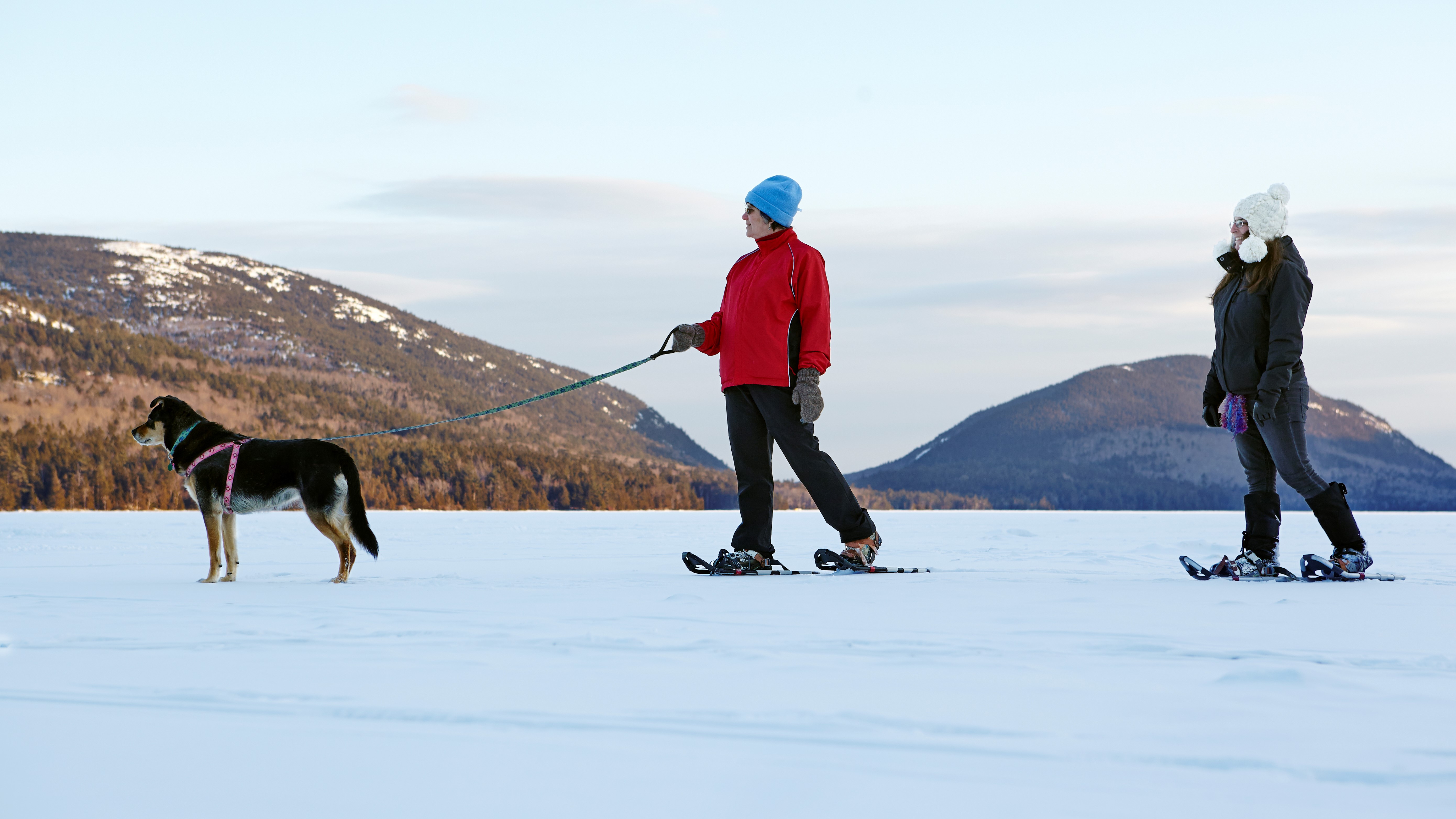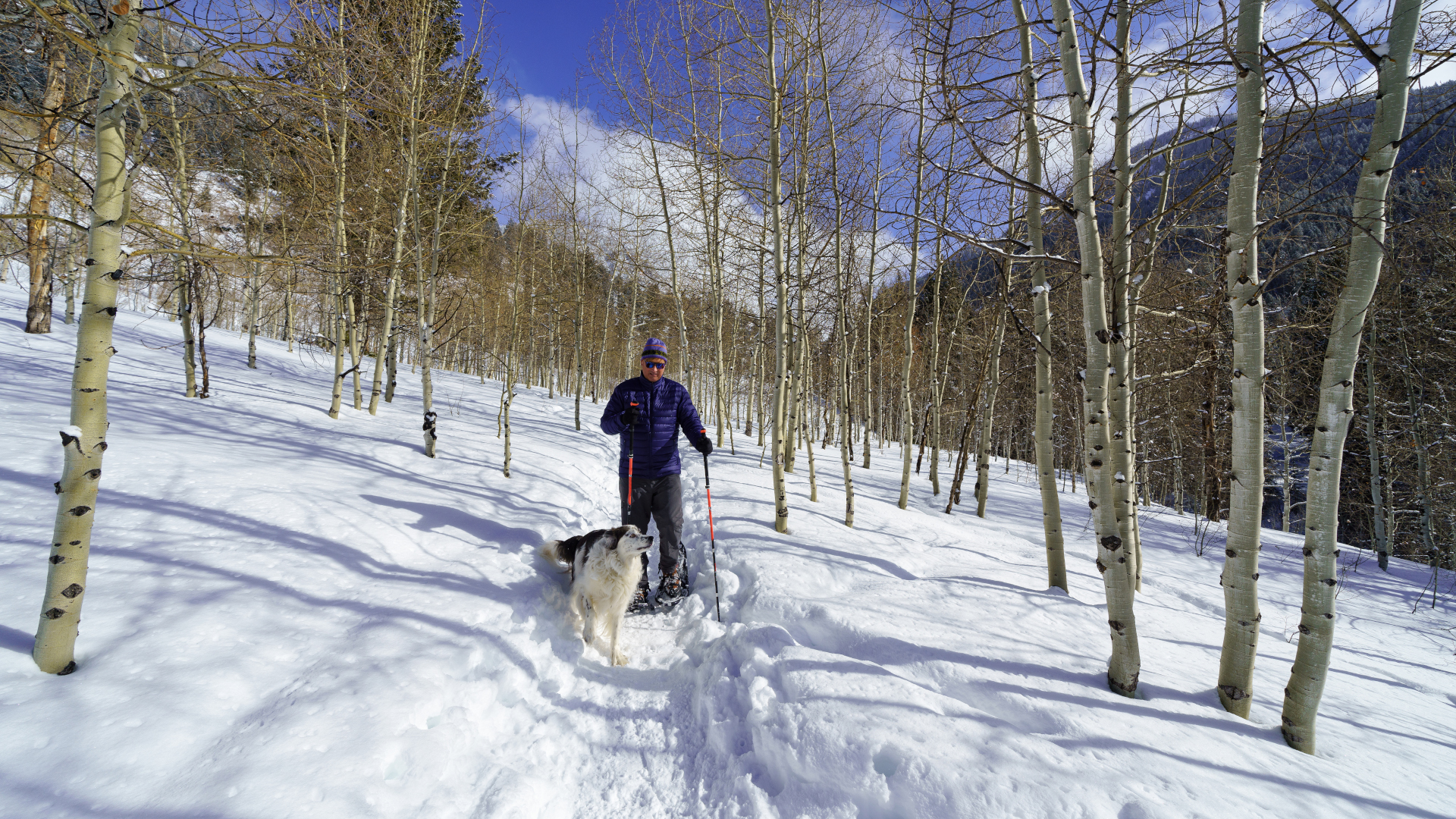How to keep your dog safe around ice this winter
What to do if your dog falls through ice and how to prevent it

The same thing happens every year when the temperatures plummet – news stories abound about dogs needing rescue after falling through ice. In late fall and early winter, just as bodies of water are starting to freeze over, conditions on the ground tend to be the most dangerous for dogs.
If you love hiking with your dog, all the newly frozen surfaces at this time of year present boundless opportunities to sniff and explore, but remember that the ice is inconsistent and often thin earlier in the season. All it takes is for your beloved canine to spot a squirrel or rabbit on the far side of a frozen lake and go haring off onto unstable ice and before you know it, you hear that sickening crack of the ice giving way underneath them.
Witnessing your dog falling through ice is one of the worst things that can happen to you as a dog owner, but knowing what to do when it does happen and how to prevent it can help you from making the wrong decision and ending up in trouble yourself.

What to do if your dog falls through ice
If your dog is frolicking on a frozen pond and falls through the ice, your natural instinct as a pooch parent is going to be to panic and jump in after it – don’t. Your body weight isn’t nearly as evenly distributed as that of your four-legged friend and any ice that breaks under your dog certainly can’t hold your weight. Chasing your dog into the icy water will only result in more work for rescue services, or worse.
If your dog falls through the ice, try to stay calm and follow these steps:
1. Call for help
In most places, the quickest way to get help is to pull out your phone, dial 911 and ask for the fire department. Though waiting for emergency services to arrive might feel like agony, remember that dogs will be able to withstand the effects of freezing cold water longer and better than humans, thanks to their fur coat.
2. Let the rescuers do their job
Wait until the fire department shows up, and let them carry out the rescue. Unlike you, they will be wearing protective gear so that they can safely enter the water and may use several crew members and a rope to extract your dog without putting anyone else in danger.
All the latest inspiration, tips and guides to help you plan your next Advnture!
3. Check your dog for signs of hypothermia and frostbite
The safest course of action is to dry your dog immediately, wrap them in a blanket and take them straight to the vet to get them checked out. If for any reason you’re checking them yourself, look for discoloration or redness on their skin, which could indicate frostbite, and the warning signs of hypothermia, which in dogs means shivering, muscle stiffness, lethargy, difficulty walking, pale gums, cool body surfaces and confusion according to PetMD.

How to keep your dog from falling through ice
The biggest step you can take at this time of year to keep your dog safe from ice is to keep it on a leash at all times. If you want Fido to be able to roam free, pick well-lit areas you know are free from water that could freeze, such as ponds, reservoirs and lakes, and keep tabs on your pooch at all times. If the two of you are walking together on areas of frozen water, make sure you know what to do if you fall through ice.
Julia Clarke is a staff writer for Advnture.com and the author of the book Restorative Yoga for Beginners. She loves to explore mountains on foot, bike, skis and belay and then recover on the the yoga mat. Julia graduated with a degree in journalism in 2004 and spent eight years working as a radio presenter in Kansas City, Vermont, Boston and New York City before discovering the joys of the Rocky Mountains. She then detoured west to Colorado and enjoyed 11 years teaching yoga in Vail before returning to her hometown of Glasgow, Scotland in 2020 to focus on family and writing.

